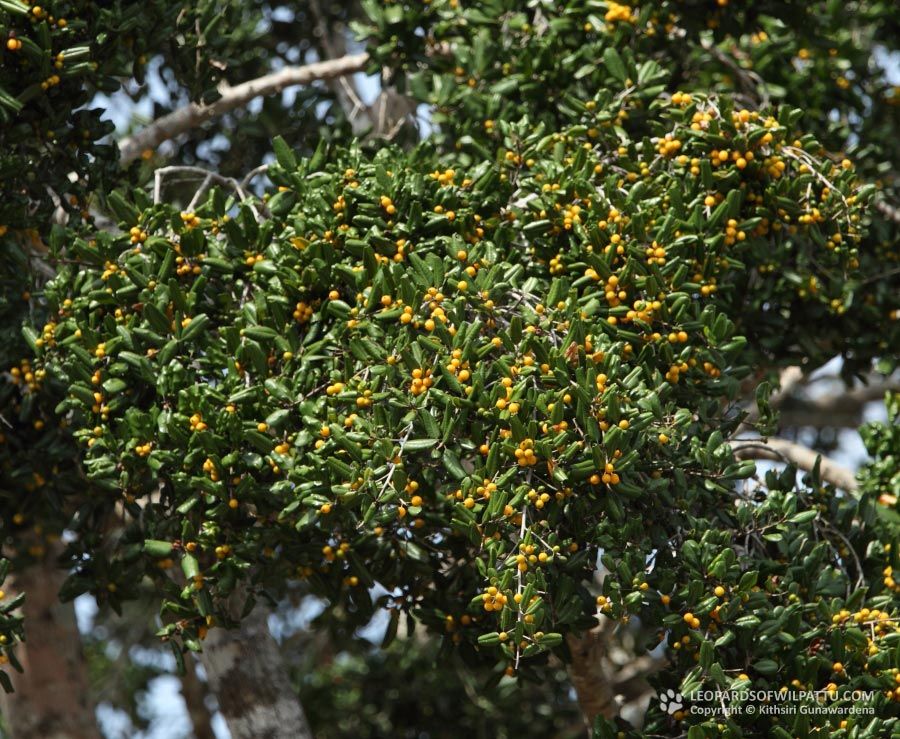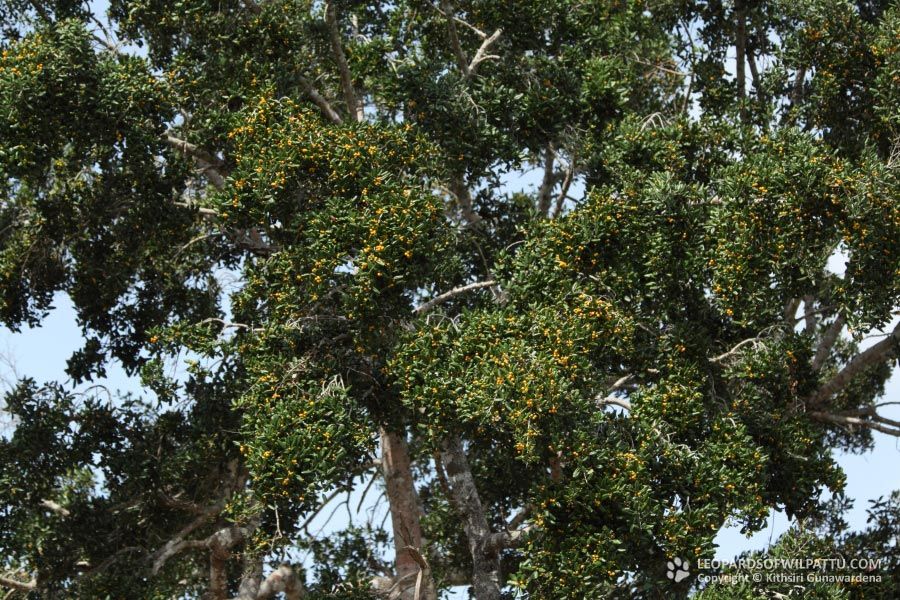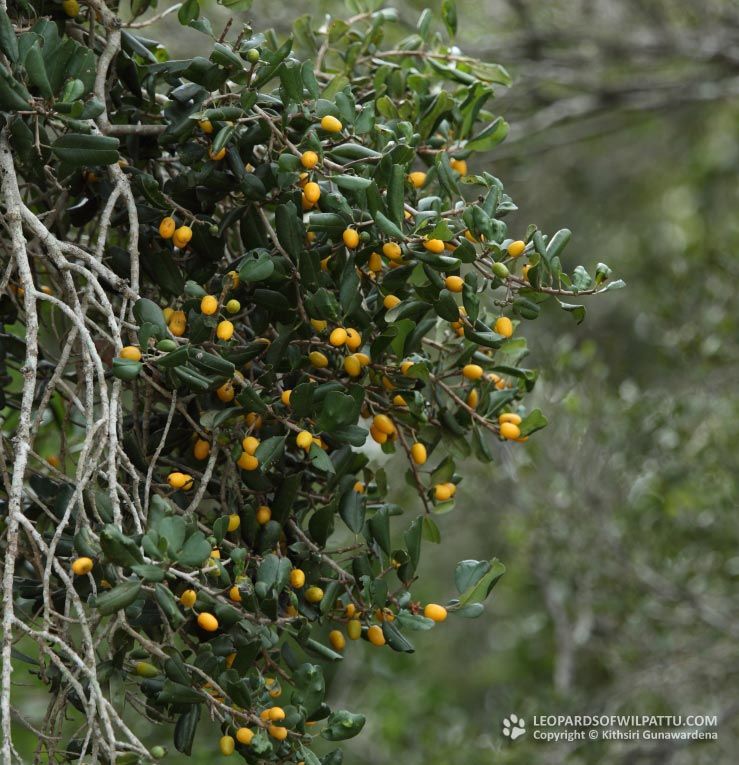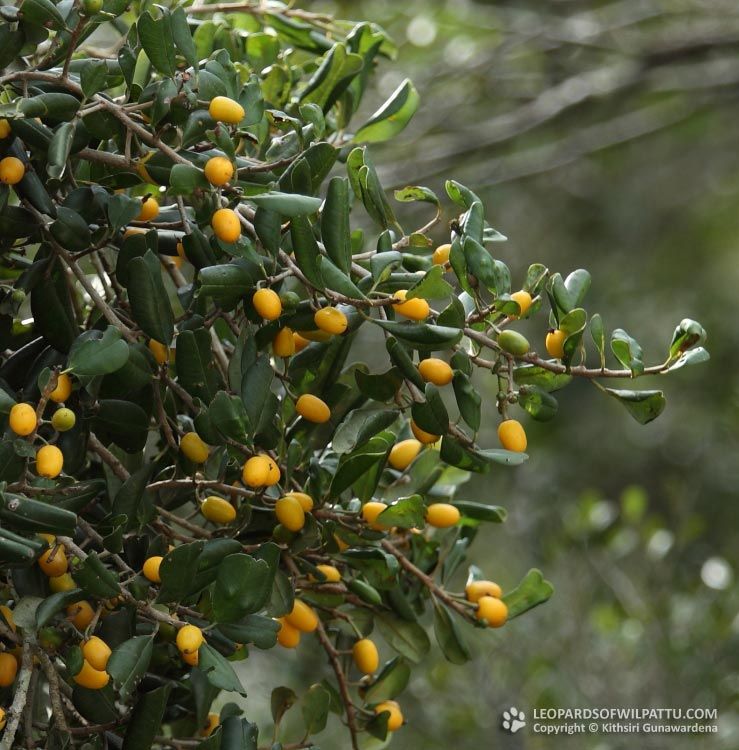
Trees & Shrubs ‹‹ Go Back
This is an indigenous species and one of the dominant tree species in the dry and intermediate forests in the country. It is common in the coastal areas and lowlands of the dry and intermediate zones. Other than Sri Lanka this species is also native to China, India, Bangaldesh, Cambodia, Myanmar, Thailand, and Vietnam.
This is a slow growing evergreen tree that grows in tropical and temperate forests. It grows to about 80 feet tall and 3 meters in circumference. The wood of this species is very hard and weighs approximately 70 pounds per cubic foot. In Ayurveda medicine the bark, fruits and the seeds of this species are used to treat many aliments.
The conservation status of this species is regarded as Vulnerable ( National Red List 2012)
I have seen this species in all the dry zone national parks in the country. Even though it is quite common in the dry zone national parks, recent studies have revealed die-back of this species from many parts of the country and that the regeneration is quite poor. The effects of tree die-back of this species are most severe at Bundala National Park which is invaded by the invasive Prosophis jiliflora.
The horizontally cracked bark, which is characteristic feature of the mature trees of this species, reflects the ruggedness of the environment in which they grow. Many species of animals are attracted to these trees during the fruiting season to feed on the sweet berries. This is a very important host tree for the wild orchid species Vanda tessalata. I have observed large communities of this orchid growing on the branches of this species in the dry lowland areas.
In Wilpattu this species can be seen throughout the park but is more common in the coastal areas. Many of these trees bear fruit during the months of May and June. I have observed mammals including Sloth Bears, Spotted Deer, Grey Langur, Purple-faced Leaf Monkeys, Giant Squirrels and many species of birds feeding on the ripe berries of this species.




